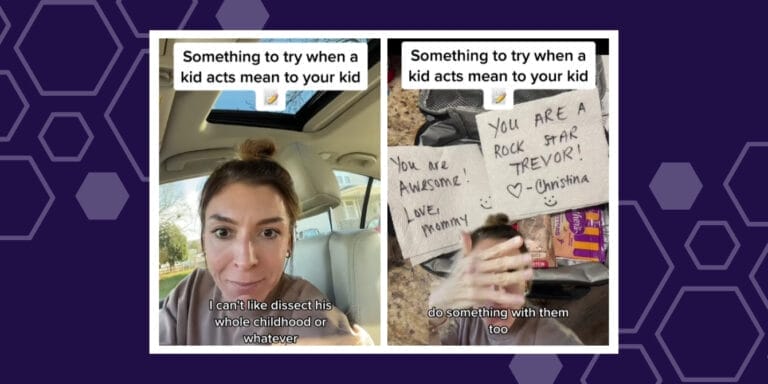The important reason why kids need more playtime (especially during the school year)

We all need to be reminded to slow down, find calm, lower our stress, and 'play' more to find the balance that is so important in our lives.
Table of Contents
The pencils have been purchased, the backpacks are packed, and our kids are officially back at school. Classes are now taking up a big chunk of kids’ days, and our days are increasingly filled with new morning routines, school drop-offs, pick-ups and other school-year commitments, not to mention the extracurriculars that are starting to fill up our calendars.
If you find yourself, someday soon, carpooling your kids to gymnastics or soccer after school and missing the lazier, less scheduled vibe of summer break, you might want to consider giving your kids (and yourself) a little bit of a break every day, says Dr. Robert Murray.
He’s a pediatrician, lead author of the American Academy of Pediatrics’ The Crucial Role of Recess, and vice chair of the board of directors of the nonprofit organization Action for Healthy Kids, and he says kids and parents can benefit from scheduling time to simply do nothing.
“We all need to be reminded to slow down, find calm, lower our stress, and ‘play’ more to find the balance that is so important in our lives,” Murray tells Motherly. He doesn’t recommend going straight to an after-school activity like ballet or baseball right after school. Instead, Murray says parents should consider 30 minutes of unstructured, nothing-planned time (away from screens).
“Parents are often concerned about their children being bored or ‘doing nothing,’ however that is often when children are most creative and open to exploring new things,” says Dr. Murray, who says parents shouldn’t feel the need to influence and control exactly how the kids spend their half hour.
They wanna play basketball, cool. They want to color, cool. This is kid-directed time, and mama doesn’t have to get down on the floor and participate in the play for it to be valuable. “While it’s important for parents to play with their kids regularly, it’s more than okay for kids to play on their own and make their own choices. Both types of play contribute to a strong sense of self among developing children,” says Murray.
Unstructured time doesn’t mean screen time
One caveat to Dr. Murray’s advice—unstructured time and screen time are two different things. This 30-minute break is for old-school playing, not for playing on the iPad.
According to a survey by GoGo squeeZ, a lot of parents find it tricky to prevent unstructured time from becoming screen-time with 73% of parents surveyed saying that they schedule structured activities for their kids in order to minimize screen time. According to Dr. Murray, filling a kid’s schedule with extracurriculars so they won’t have time for tablets or TV doesn’t give kids the balance they need.
“Excess pre-planned, adult-controlled time hampers children’s ability to develop and practice their social skills, problem solving, creativity, and interpersonal communication skills. These are critical life skills,” Murray explains.
Getting rid of an extracurricular (or just choosing to sign up for fewer activities this year) doesn’t have to mean more time in front of a screen. We can specify that our 30 minutes of what Murray calls “Be Time” is screen-free time, and put away the remotes, phones, tablets and computers. If that’s hard to pull off at home, you might want to start with a trip to the park or playground, or another space where your kid can direct their own screen-free play.
“Parents can help provide alternatives to screen time that still allows the time to be unstructured. New environments, such as taking kids to the playground, museum, farm or other places can help allow kids to find new ways to be creative,” says Murray.
Make the most of the moments you do have
Our kids aren’t the only ones with jam-packed schedules. As Dr. Murray says, this is kind of a problem for all Americans, regardless of age. So if your own schedule doesn’t allow for a 30 minute trip to the playground every day after school, or a half-hour of doing nothing at home before dinner, don’t worry.
We can still incorporate elements of unstructured time into our family’s schedule by simply letting our kids be kids, even on the days when we are the busy ones.
According to Dr. Murray, this could be as simple as “inviting them to touch and smell interesting fruits or vegetables at the grocery store while running errands with you.” Letting our kids interact with their environment and make their own choices can be a bit of a mini-brain break, even on the afternoons when mama’s got her own to-do list.
Let go of an after-school activity
If you’re already feeling like the school year is off to an over-scheduled start, consider ditching an activity for more unstructured time.
Dr. Murray suggests looking at your child’s schedule and ranking extracurricular activities by how happy they make your child. If there’s one that your kid only kind of likes, or a sport or class that has them feeling bored or anxious, let it go, and don’t feel guilty. “By removing the activities that don’t bring your child joy, you can focus on the ones that make them truly happy, including their own personal ‘Be time,'” says Murray.
The bottom line
“Parents shouldn’t feel like they need to be constantly directing their kids’ time,” says Dr. Murray, pointing to the American Academy of Pediatrics statement on The Power of Play, in which “pediatricians, parents, and care-givers are encouraged to develop opportunities for children to have frequent unstructured time to play.”
It’s okay (and even beneficial) for our kids to just have some downtime to just be kids, and it’s nice for mamas too.


































